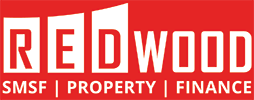As a property focused accountant, one of the most common questions I receive is whether you can engage in property development using a Self Managed Superannuation Fund (“SMSF”) – the answer is yes you can! However you need to tread carefully to comply with Superannuation Law.
Many of our clients have great experience with property including development and would like to extend the strategy to their SMSF. However, its not simple, qualified advice is required to ensure you comply with Superannuation Law. This may be too hard for some and a perfect challenge for others.
Can you develop property in an SMSF?
Many believe it’s a big “no-no” to develop property in an SMSF. That’s incorrect, you can. Believe it or not, an SMSF can invest in most if not all asset classes allowed by your Trust Deed and Investment Strategy. Sometimes, without the right advice, SMSF investors fear that by engaging in property development, their fund will be non-compliant, as the fund will be carrying on a business – this can be overcome fairly easily.
Although, Superannuation Law and tax rules are rather complex so there are a number of considerations that need to be satisfied in order for the SMSF to remain compliant.
One factor that will affect whether a property development will breach any rules will be the source of funds for the development? Where will the funds be obtained to carry out the property development:
- Existing cash in the SMSF,
- Cash from members by way of a contribution (subject to contribution caps)
- Borrowings
- Non-SMSFs (provided they can invest and what restrictions apply)
Our focus of this article will be based on using cash only from the SMSF as this will not be affected by the complex single acquirable asset rules under a Limited Recourse Borrowing Arrangement.
Property development using your own funds
When using your own funds you can basically do whatever you want as permitted by your Trust Deed and Investment Strategy and will be complicated if you use a related builder.
Does property development mean I am carrying on a Business?
There are no specific prohibitions preventing an SMSF from carrying on a business. SMSF property development does not mean you are breaching the sole purpose test, which simply requires a fund to be established and maintained for the purpose of providing retirement benefits. A fund trustee will not necessarily be carrying on a business of property development, it will depend on the nature and scale of development, and whether the land developed will be held or resold.
Recently, the ATO Deputy Commissioner Kasey Macfarlane has flagged Property Development as part of its compliance focus, its important that you seek qualified advice before proceeding with SMSF Property Development to ensure you are not carrying on a business.
SMSF Property Development with a related builder
When dealing with related parties, dealings must be maintained on an arm’s length basis as set out in Section 109 of Superannuation Law. Essentially, an arm’s length basis requires that arrangements must be made on commercial terms; suchas if you engaged an unrelated third party. This can be confirmed by obtaining at least two independent quotes from unrelated builders.
When you are using a related builder, its important to meet the arms length provisions an agency agreement may be required to ensure you do not breach Superannuation Law. A standard building contract will be drafted and agreed between the parties. To ensure the contract is at arms length – it is recommended to obtain at least 2 unrelated quotes for building services. The building contract will need to be “services only”. The builder will not provide materials like an ordinary builder/ client relationship.
Agency Agreement
An Agency Agreement will formally appoint the builder as an agent of the SMSF and therefore there will be no legal entitlement passing to the related party and therefore no breach of s66. This is due to the fact that the related party builder is only acting as agent and the building materials are purchased by the related party on behalf of the SMSF Trustee and the related party does not hold a legal title over the building materials. The building materials should be purchased from an unrelated third party on commercial terms.
The best way to facilitate this is for the SMSF and related builder to set up a joint bank account and the materials will need to be purchased directly from this account. At no time should the related builder pay for materials and the SMSF reimburse the builder or provide progress payments, as this will potentially be a breach of s66 Superannuation Law.
Types of Structures for SMSF Property Development
SMSF Property development can be carried out using a number of structures:
- SMSF Direct
- Tenants in Common
- 13.22 Trusts
- Unrelated Trusts
- Limited Recourse Borrowing Arrangements
PersonallyI have a strong preference for tenants in common whereeach party owns 50% of the property. They then jointly engage a contract with a builder (can be related) to carry out the development on the property.
A real life example
A recent example of successful SMSF property development includes our clients Jeff & Judy (“JJ”). They are members of JJ Super Fund.Jeff’s parents are builders at “ABC Developments Pty Ltd” (“ABC”). They have secured a site with plans and permits for four townhouses in Bentleigh VIC.
They proceed to enter into a contract to purchase the Bentleigh property for $900k – JJ Super Fund and their parents will purchase the property as “tenants in common” – 50% owned by JJ Super Fund and 50% by JJ’s father. In this case – the actions of the parties are on commercial terms – and no party will buy the other parties interest and there will be no breach of Superannuation Law.
JJ Super Fund has sufficient cash reserves and will not need to borrow to fund the development as they have provided a large non-concessional contribution to the fund. JJ Super Fund has checked their Trust Deed to ensure they have the necessary powers and updated their Investment Strategy for the property development activities.
JJ Super Fund has engaged a lawyer to draft an Agency Agreement and the building contract will be “services only”. A joint bank account has been established where all materials will be paid for. No materials have been paid for directly by the builder, nor has JJ Super Fund reimbursed the builder for any purchases made. All building services are provided at arms length – with no mark up. At the outset, two independent building quotes were obtained to ensure the materials are not marked up.
During the development, JJ Super Fund has consulted their specialist advisor to ensure all steps have been taken to comply with Superannuation Law.
Tips and Traps
Before entering into a property development – SMSF Trustee’s should:
- Review or update the fund Trust Deed to ensure it has the powers to enter the agreement/ development
- Review the SMSF Investment strategy
- Obtain specialised advice on the purchase contract and Agency agreement
- Ensure the builder provides services only – do not reimburse the builder for materials purchases
- No mark ups – ensure all services are commercial at arms length
Tread carefully and reap the benefits….
Engaging in property development through your SMSF can be a very beneficial strategy – however care must be taken to ensure you comply with Superannuation Law.Don’t cut corners and seek qualified advice from the outset.
Disclaimer – The content has been prepared by Redwood Wealth Pty Ltd & Redwood Advisory Pty Ltd without taking account of the objectives, financial situation or needs of a particular individual and does not constitute financial product advice. This article should not be considered personal financial advice as it is intended to provide factual information only.
Ivan Filipovic is an authorised representative of First Mutual (AFSL 423710). Redwood Wealth is a Corporate Authorised Representative of First Mutual (1244359)




